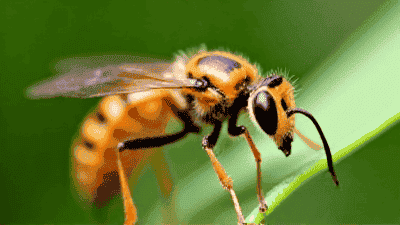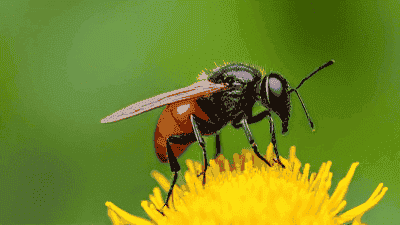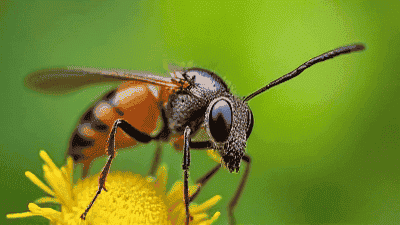
In the intricate world of gardening and agriculture, pests can pose a significant threat to crop health and yield. The use of chemical pesticides has historically been a primary method of control, but this approach often comes with negative side effects, including harm to non-target species, pollution, and the development of pesticide resistance. In recent years, the focus has shifted towards more sustainable methods of pest control, one of which harnesses the power of beneficial insects.
Beneficial insects are organisms that provide valuable ecosystem services, particularly in pest management. They can be broadly categorized into three main groups:
Predators: These insects actively hunt and consume pest species. Predators play a crucial part in controlling pest populations and include insects like ladybugs, lacewings, and certain beetles.
Parasitoids: Parasitoids lay their eggs on or inside pest insects. When the eggs hatch, the larvae consume the host insect, leading to its demise. Common parasitoids are wasps that target aphids, caterpillars, and other pests.
Pollinators: While not directly involved in pest control, pollinators, such as bees and butterflies, contribute to the overall health of ecosystems by facilitating plant reproduction. Healthy plants can better withstand pest infestations.
Beneficial insects are integral to maintaining ecological balance in both natural and agricultural systems. They help regulate pest populations, prevent outbreaks, and promote biodiversity. By functioning within food webs, these insects contribute to a natural pest control system, reducing the need for synthetic pesticides and fostering healthier environments.

Utilizing beneficial insects for pest control comes with a range of advantages:
Beneficial insects offer a non-toxic solution to pest management. Unlike synthetic pesticides, which can pollute water sources, harm non-target organisms, and lead to chemical residues on crops, beneficial insects promote ecological health and sustainability.
Incorporating beneficial insects into pest management strategies can reduce reliance on chemical products, leading to cost savings over time. Many beneficial insect species can be cultivated, or they may already be present in the ecosystem, minimizing the need for external purchases.
Beneficial insects contribute to long-term control of pest populations. Unlike pesticides that may provide short-term relief without addressing the underlying pest issues, beneficial insects can create a self-sustaining balance that keeps pest numbers in check over time.
Encouraging beneficial insects fosters biodiversity within ecosystems. A diverse range of insects supports overall ecosystem health, improves soil quality, and enhances food production. Biodiversity is critical for resilience in the face of environmental stresses such as climate change.
In many cases, beneficial insects work synergistically with other natural pest control methods. For example, integrating beneficial insects with organic farming practices like crop rotation and cover crops can enhance overall pest management strategies.
Numerous beneficial insects play essential roles in pest control. Here are some key examples:
Ladybugs are well-known predators of soft-bodied pests, particularly aphids. A single ladybug can consume hundreds of aphids in a single week. They also feed on other pests like mealybugs and spider mites, making them effective generalist predators.
Tips for Attracting Ladybugs:
Lacewing larvae, often referred to as "aphid lions," are voracious predators that consume aphids, whiteflies, mites, and small caterpillars. Adult lacewings feed on nectar and pollen, making their presence beneficial for pollination.
Tips for Attracting Lacewings:
Parasitic wasps are highly effective in controlling pest populations, particularly caterpillars and aphids. These tiny wasps lay their eggs inside host insects. When the larvae hatch, they consume the host, leading to its demise.
Tips for Utilizing Parasitic Wasps:
Green lacewings are beneficial insects that focus on aphids, caterpillars, and other pests as larvae. They are known for their long, delicate wings and bright green bodies. Both adults and larvae feed on a variety of pest species.
Tips for Encouraging Green Lacewings:
Predatory mites target pest species such as spider mites, thrips, and certain fungus gnat larvae. Some species of predatory mites can consume vast amounts of pests, making them valuable allies in pest control.
Tips for Using Predatory Mites:
Hoverflies, also known as flower flies, serve dual roles as pollinators and predators. Their larvae feed on aphids, making them beneficial for controlling aphid populations. Adult hoverflies are attracted to flowering plants.
Tips for Attracting Hoverflies:
Tachinid flies are parasitoids that lay their eggs on pest species. Their larvae feed on and eventually kill the host insect, effectively managing pest populations. They are natural enemies of many pests, including caterpillars and beetles.
Tips for Promoting Tachinid Flies:

To effectively harness the power of beneficial insects, it is essential to integrate them into broader pest management strategies. Here’s how to do so:
Promote biodiversity in your garden by planting a variety of flowers, herbs, and vegetables. A diverse plant selection supports different beneficial insect species and helps create a more stable environment.
Utilize companion planting techniques to pair pest-prone plants with beneficial companions. For example, planting marigolds alongside vegetables can attract ladybugs and other predators while repelling certain pests.
To protect beneficial insects, limit or eliminate the use of chemical pesticides in your garden. If pest control is necessary, opt for targeted and eco-friendly solutions that minimize harm to beneficial species.
Create habitats that support beneficial insects by incorporating various plant structures, such as ground cover, hedgerows, and flowering plants. These diverse arrangements provide shelter and food sources.
Foster an environment for natural predators by reducing pest populations early through monitoring and employing non-toxic measures. For example, the earlier you introduce beneficial insects, the more effectively they can manage pests.
Regularly assess pest populations through observation and sampling. Early detection allows for timely interventions and reduces the likelihood of severe infestations.
Raise awareness about the importance of beneficial insects in pest control within your community. Encourage neighbors and community members to adopt ecological practices that support beneficial species.
The role of beneficial insects in pest control is fundamental for sustainable gardening and agriculture. By entering into cooperative relationships with these natural allies, gardeners can create resilient ecosystems that support biodiversity, enhance plant health, and minimize reliance on chemical pesticides.
Embracing companion planting, creating diverse habitats, and practicing mindful pest management not only lead to healthier gardens but also contribute to environmental preservation. As we navigate the challenges of modern pest management, fostering beneficial insects is a powerful strategy that harmonizes agriculture with nature, ensuring productive and balanced ecosystems for generations to come.
In conclusion, understanding the vital roles that beneficial insects play in pest control encourages us to appreciate and protect these invaluable creatures. By making conscious decisions in our gardening practices, we can help maintain healthy ecosystems and nurture our connection with the natural world.